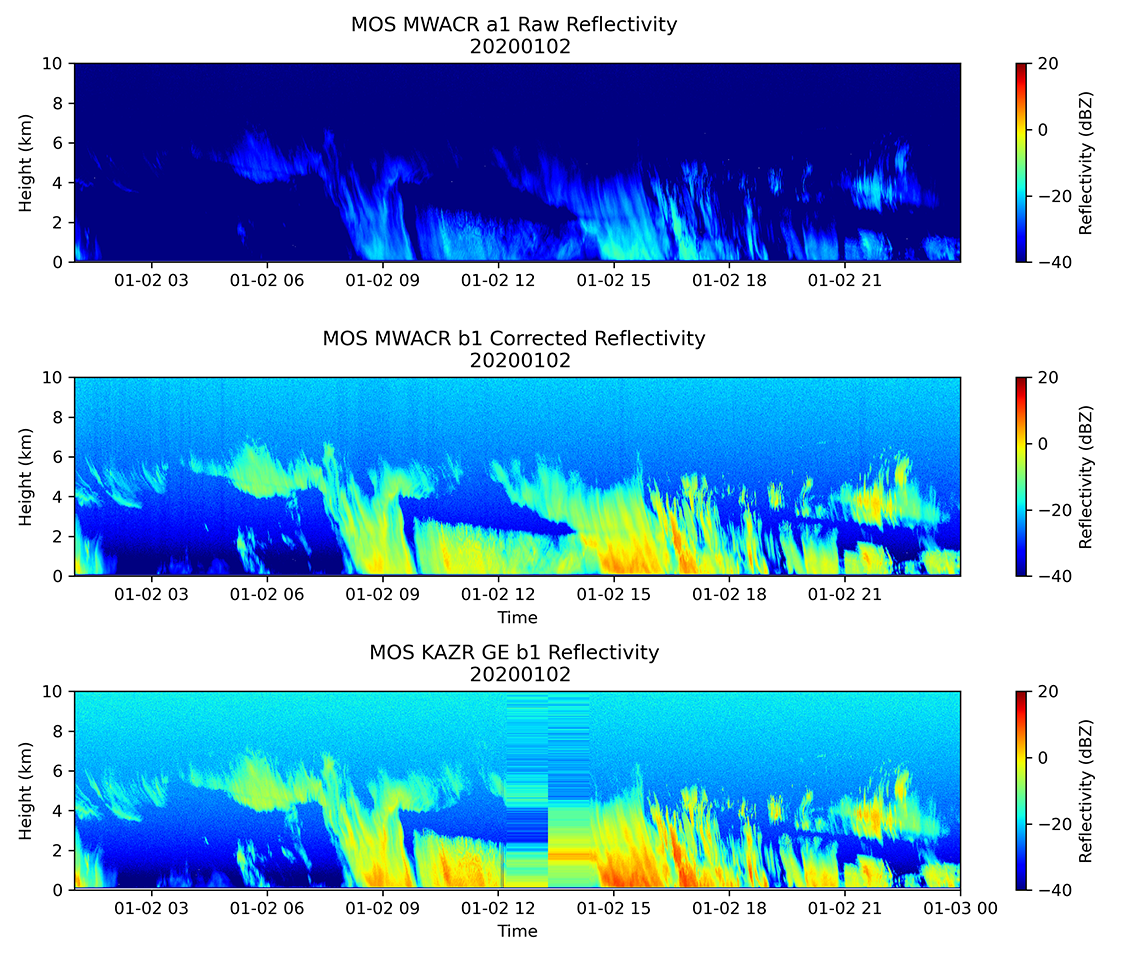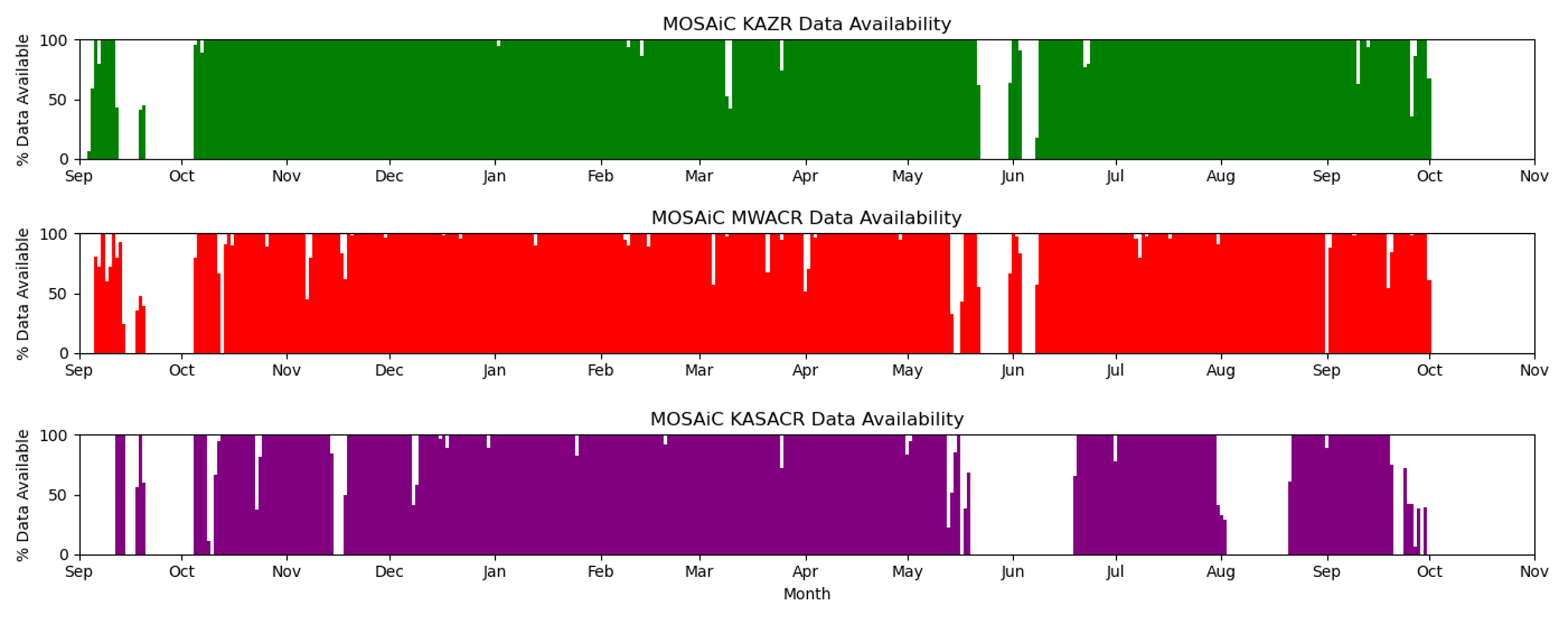
All scientists interested in researching the Arctic’s climate can now use characterized and corrected radar data from the 2019–2020 Multidisciplinary Drifting Observatory for the Study of Arctic Climate (MOSAiC) expedition. These data are considered b1-level, meaning they underwent calibration, correction, and quality control processes beyond the Atmospheric Radiation Measurement (ARM) user facility’s standard quality checks and corrections.
ARM produced b1-level data for the following radars that operated on the research icebreaker R/V Polarstern in the central Arctic as part of MOSAiC:
- Ka-Band Scanning ARM Cloud Radar (KASACR)
- Ka-Band ARM Zenith Radar (KAZR)
- Marine W-Band ARM Cloud Radar (MWACR).
MOSAiC was a challenging field campaign because of its remote location and cold weather, which might have contributed to large reflectivity offsets for the radars. The data are corrected for these biases and include meteorological echo masks.
ARM staff applied reflectivity offsets to the KASACR (approximately minus 18 dB) and MWACR data (approximately minus 17 dB) to bring them in line with the KAZR reflectivity.
The meteorological echo masks allow scientists to quickly remove background noise and clutter when needed.
The corrected and characterized data are available now in CfRadial format.
More information about the MOSAiC b1-level radar data processing, including the reflectivity corrections, is available in this ARM technical report.
For questions or to report data problems, please contact ARM Radar Data Associate Mentor Alyssa Matthews.
Access the KASACR, KAZR, and MWACR b1-level data in the ARM Data Center. (To download the data, first create an ARM account.)
To cite the data, please use the following DOIs:
- KASACR: doi:10.5439/1892487
- KAZR: doi:10.5439/1615486 (moderate sensitivity mode) and doi:10.5439/1615726 (general mode)
- MWACR: doi:10.5439/1998166.

ARM is a DOE Office of Science user facility operated by nine DOE national laboratories.

